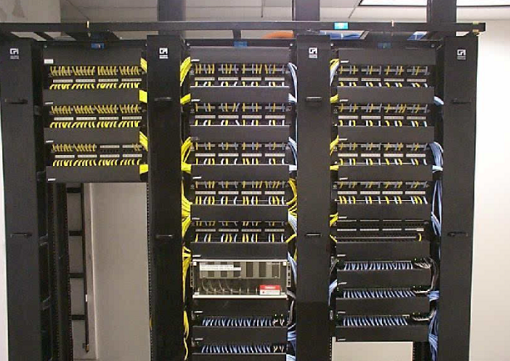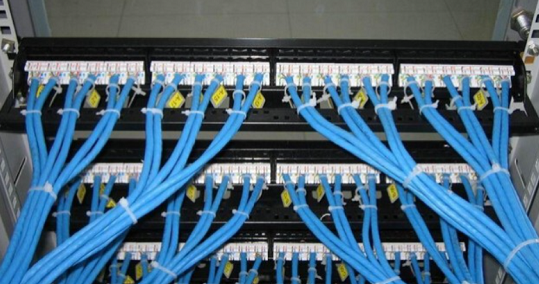News
Site Editor
 Site
https://leonetworkgroup.usa18.wondercdn.com/uploads/image/5fe152faa587d.png
What is structured cabling? Structured cabling is defined as building or campus telecommunications cabling infrastructure. Typically, it consists of a number of standardized smaller elements. In a structured cabling system, there is a structure created by a series of patch panels and trunks.
Site
https://leonetworkgroup.usa18.wondercdn.com/uploads/image/5fe152faa587d.png
What is structured cabling? Structured cabling is defined as building or campus telecommunications cabling infrastructure. Typically, it consists of a number of standardized smaller elements. In a structured cabling system, there is a structure created by a series of patch panels and trunks.
The Basics of Structured Cabling
Views: 1952
Author: Site Editor
Publish Time: 2021-10-09
Origin: Site
What Is Structured Cabling?
What is structured cabling? Structured cabling is defined as building or campus telecommunications cabling infrastructure. Typically, it consists of a number of standardized smaller elements. In a structured cabling system, there is a structure created by a series of patch panels and trunks. It allows for a connection from hardware ports to a patch panel at the top of the rack. Then, that patch panel is connected to another patch panel through a trunk in the MDA. And the MDA (Main Distribution Area) is the main aspect of structured cabling. It provides a place for all the MAC’s (Moves, Adds, and Changes) to be made with short length patch cords.
Besides, a structured cabling system is specified by some standards like TIA/EIA-568. These standards provide guidelines for data center design, management and operation.
What Does Structured Cabling Look Like?
To answer that question, I would use the word “organization”. Structured cabling is an organized approach to cabling infrastructure. Although it may seem backward, to fully understand this concept it is easiest to look at what structured cabling isn’t. In many data centers, the cabling methodology used is defined as “point-to-point”. That method runs patch cables (or “jumpers”) directly to and from the hardware that needs connectivity.
In a structured cabling system, a series of patch panels and trunks are used to create a structure that allows for hardware ports to be connected to a patch panel at the top of the rack. That patch panel is then connected to another patch panel via a trunk (multi-fiber assembly designed for use in conveyance) in the MDA (Main Distribution Area).
The MDA is the key aspect of structured cabling. This is where all the MAC’s (Moves, Adds, and Changes) can be made with short length patch cords.
See below for some helpful diagrams.

What Are the Benefits of Structured Cabling?
Once again, organization is the key word here. With an organized, top quality structured cabling system the benefits are:
Moves, adds, and changes are much easier due to the fact that they are done in the MDA versus running long patch cords from equipment racks.
Potential for downtime is reduced as the potential for human error is drastically reduced due to this organization.
Time savings; cable and port tracing becomes a much easier job with a structured cabling system. This logical, organized approach not only makes changes easier, but it saves you time.
Aesthetics; Never underestimate the looks! A structured cabling system will look much cleaner than a point-to-point method. Since the changes are done in the MDA versus at the hardware, the hardware can be cabled up and not touched in most instances. This allows the cabling in front of the switch to remain aesthetically pleasing.
Why Use Structured Cabling?
Unlike the traditional point-to-point cabling system, the structured cabling system can avoid the jungle of wiring and carry increasing data at high rates. It plays a significant role in communication infrastructure. The following highlights some of the benefits:
Cost effective – The structured cabling is an organized simple cabling system. It can reduce power and maintenance costs, and it avoids spending money on locating and rectifying.
Reducing the risk of downtime – There is a high risk of human error when people managing the multiple, unorganized cabling structure. These mistakes can cause flow disruptions and network downtime. The structured cabling is organized and it’s easy to identify, which can help reduce the risk of downtime.
Time-saving – Structured cabling is flexible that can accommodate moves, adds and changes quickly. It saves installation time as well as maintenance time.

Conclusion
After reading this article, have you got the answer for “what is structured cabling?” To put it simply, structured cabling is a cabling infrastructure that provides an organized, standardized approach to cabling. And choosing the right structured cabling solution can have an impact on a range of issues, consisting of data transmission speed, network performance, power consumption, cost, etc. Leo Network provides high-quality products for your structured cabling solution, including fiber cables and copper cables. If you have any needs, welcome to contact us.
If you want to know more about industrial network cabinet,china fiber optic splice closure,china fiber optic distribution box,please consult the fiber optic splice closure factory





